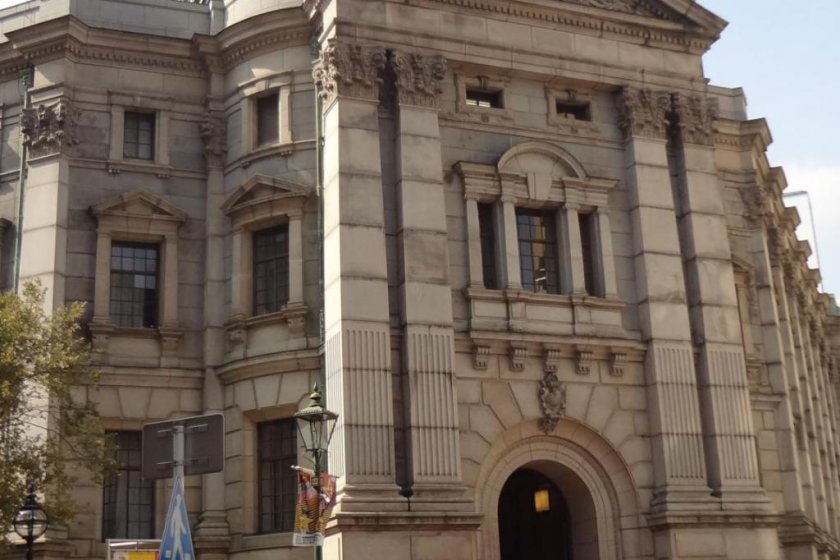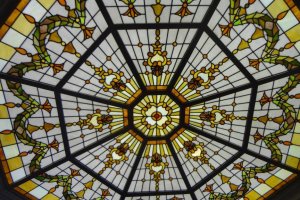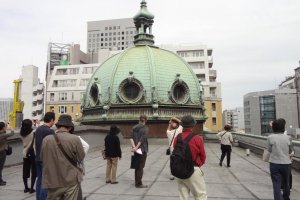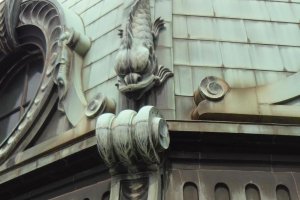When you leave Kannai Station and stroll along Bashamichi Street, you will eventually reach an authentic stone building on the left side of the road. It has a finely arched, large green dome, solid pillars of the Corinthian order, and a façade decorated with elegant sculptures and fine window ornamentation. Can you imagine what this building actually is? Guess! Actually, it used to be the biggest bank (横浜正金銀行) in Japan. It was built in 1904 as a bank that specialized in foreign exchange and trading.
The Building
Now the building has been refurbished into a museum of cultural history; the building itself speaks of Yokohama history with a quiet eloquence. The building is also quite strong in that it is covered with solid stones and framed by iron and steel and red brick. Thanks to these reinforcements, it was able to withstand the Great Kanto Earthquake of 1923.
The Exhibitions
The museum has divided its numerous exhibitions into six sections. After buying your ticket at the entrance, take the escalator up to the third floor and begin here. The first section is all about ancient Kanagawa. Here you will feel the frugal and simple lives they lived in old Japan when you see display items such as simple iron and wooden tools, and pieces of pottery. The second section features a large Buddhist temple model, engravings and statues. Japanese Buddhism was closely related and linked to the samurai government, so this section also exhibits beautiful armor and swords. My favorite exhibit here is a very large wooden model of Kamakura’s Engakuji temple (円覚寺). This is unbelievably exquisite. If you have a plan to go to Kamakura, I hope you include Engakuji (just in front of Kita-kamakura station) on your list.
On the second floor, the third section highlights the Edo era. Lots of Ukiyoe paintings and maps are displayed. The fourth section is related to the forced opening of Yokohama Port to the rest of the world in 1853 by Commodore Mathew Perry. It was then that Japan first accepted western culture and "change". The fifth section is space that introduces life in Japan over the last 100 years. You will find some interesting bamboo tools here.
If you are a busy traveler and have no time to go inside, just take a look at the outside of the building. It will be well worth your time. If you have just seven minutes, go inside and see the stained glass ceiling and old-days photographs on the wall. And they have a museum shop on the first floor. Of course, just looking around at these items is free. Why don’t drop by and feel something of Yokohama’s history?
The Dome
At last, I would like to tell you a bit about the dome. The other day, I went to the museum and took a special tour of normally off-limit areas, including the dome and the old central safes. We went up to the rooftop and looked at the dome’s bronze dolphins and round windows close up. The dolphins looked like a creature called Shachihoko, which is often part of the roof of Japanese castles. The dolphin’s eyes, nose and mouth are all comically big and cute! Are you curious about the inside of the dome? I went into it. And I found…nothing—just large empty space. But anyway this lovely dome is still nice and dignified, and I am proud of this building. Please see it and ask someone to take a nice photo of you with the dome in the background. It will be a great momento!



































